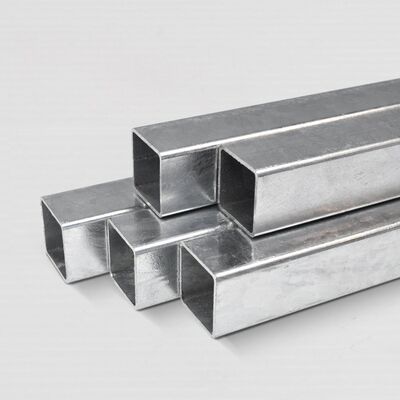- 1-905-452-8193
- Contact Us
- Member Login
- Get Listed Today
- 220,911 members

EN 10210 S235JRH rectangular pipes belong to the family of hot-finished structural hollow sections and are integral components in the construction and engineering sectors. This comprehensive guide provides essential information about S235JRH rectangular pipes, covering their characteristics, manufacturing process, applications, and considerations for selection in various projects.
Characteristics of EN 10210 S235JRH Rectangular Pipe:
1. Steel Composition:
EN 10210 S235JRH rectangular pipes are made from non-alloy carbon steel, specifically designed for hot-finished structural hollow sections. The steel composition includes carbon, manganese, silicon, and traces of other alloys.
2. Mechanical Properties:
S235JRH denotes the minimum yield strength of 235 MPa for this grade. This indicates rectangular pipes' structural strength and load-bearing capacity, making them suitable for a wide range of applications.
3. Corrosion Resistance:
While EN 10210 S235JRH rectangular pipes are not stainless steel, they can exhibit good corrosion resistance due to their specific composition. However, additional protective measures may be required in corrosive environments.
4. Hot-Finished Design:
The hot-finished manufacturing process imparts favourable mechanical properties to the pipes. Hot-finished hollow sections undergo controlled cooling after shaping, contributing to their structural integrity and toughness.
Manufacturing Process:
1. Forming:
The manufacturing process of EN 10210 S235JRH rectangular pipes begins with forming flat steel plates or strips into the desired rectangular shape.
2. Welding:
The edges of the formed sections are then welded together to create a continuous and sturdy rectangular tube. High-frequency induction welding is commonly employed in the manufacturing of these pipes.
3. Sizing and Shaping:
The rectangular tubes undergo sizing and shaping processes to meet the specified dimensions outlined in the EN 10210 standard. Precision in sizing and shaping ensures uniformity and adherence to standards.
4. Heat Treatment:
Heat treatment may be applied to enhance the mechanical properties of the pipes. It involves subjecting the rectangular tubes to specific temperature conditions and controlled cooling to achieve the desired metallurgical structure.
Applications of EN 10210 S235JRH Rectangular Pipe:
1. Construction and Infrastructure:
S235JRH rectangular pipes are crucial in constructing buildings, bridges, and other infrastructure projects. Their structural strength and versatility make them suitable for various load-bearing applications.
2. Architectural Elements:
The clean and modern appearance of rectangular pipes makes them ideal for architectural elements such as columns, facades, and decorative structures. They contribute to the aesthetic appeal of modern architectural designs.
3. Industrial Frameworks:
S235JRH rectangular pipes are used in industrial settings to construct frameworks for machinery, equipment, and other industrial structures. Their strength and durability make them reliable components in industrial applications.
4. Automotive Structures:
These rectangular pipes find applications in the automotive industry, contributing to constructing structural components and frames. Their mechanical properties and formability meet the demands of automotive engineering.
5. Material Handling Systems:
S235JRH rectangular pipes are employed in material handling systems, such as conveyor structures and storage racks. Their load-bearing capacity and dimensional stability make them suitable for supporting various materials and goods.
6. Infrastructure Development:
The pipes are integral in large-scale infrastructure projects, including developing tunnels, railway structures, and underground facilities. Their structural integrity contributes to the stability and safety of such projects.
Considerations for Selection and Usage:
1. Environmental Conditions:
Consider the environmental conditions in which the pipes will be installed. Additional protective measures may be necessary in corrosive environments to enhance corrosion resistance.
2. Structural Requirements:
Assess the specific structural requirements of the project. EN 10210 S235JRH rectangular pipes balance strength and formability, but carefully considering load-bearing needs is essential.
3. Compliance with Standards:
Ensure that the rectangular pipes comply with the EN 10210 standard and any additional specifications or regulations applicable to the project. Adherence to standards guarantees the quality and performance of the pipes.
4. Surface Finish:
Depending on the project's aesthetic requirements, consider the pipes' surface finish. The standard may specify a certain finish, or additional treatments can be applied for decorative or protective purposes.
Conclusion:
EN 10210 S235JRH rectangular pipes, with their hot-finished design and versatile applications, are foundational components in the construction and engineering landscape. This comprehensive guide provides valuable insights into their characteristics, manufacturing process, applications, and considerations for selection. Whether contributing to the structural integrity of buildings or enhancing the aesthetics of architectural designs, S235JRH rectangular pipes exemplify the intersection of strength, functionality, and adaptability in modern construction.
